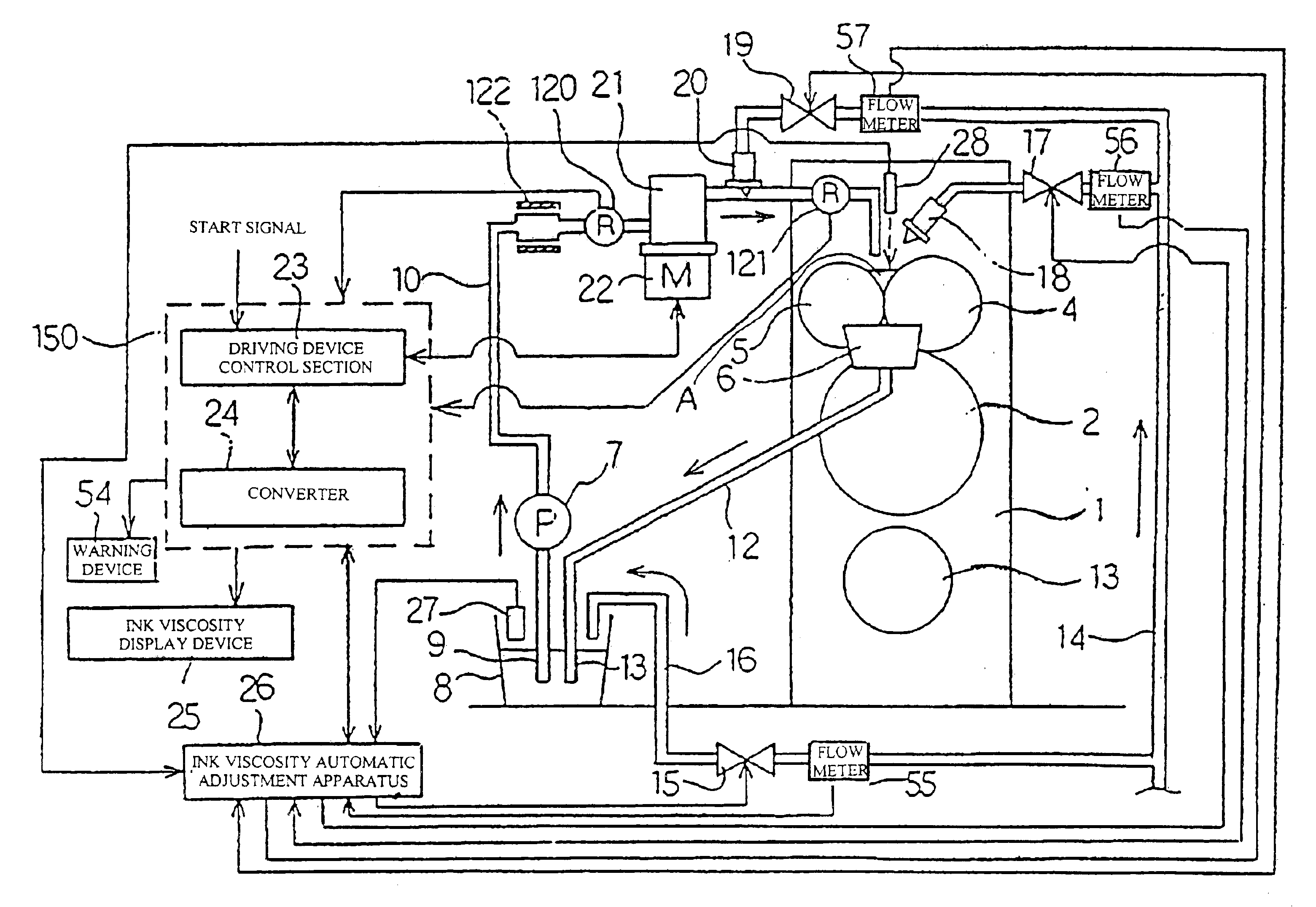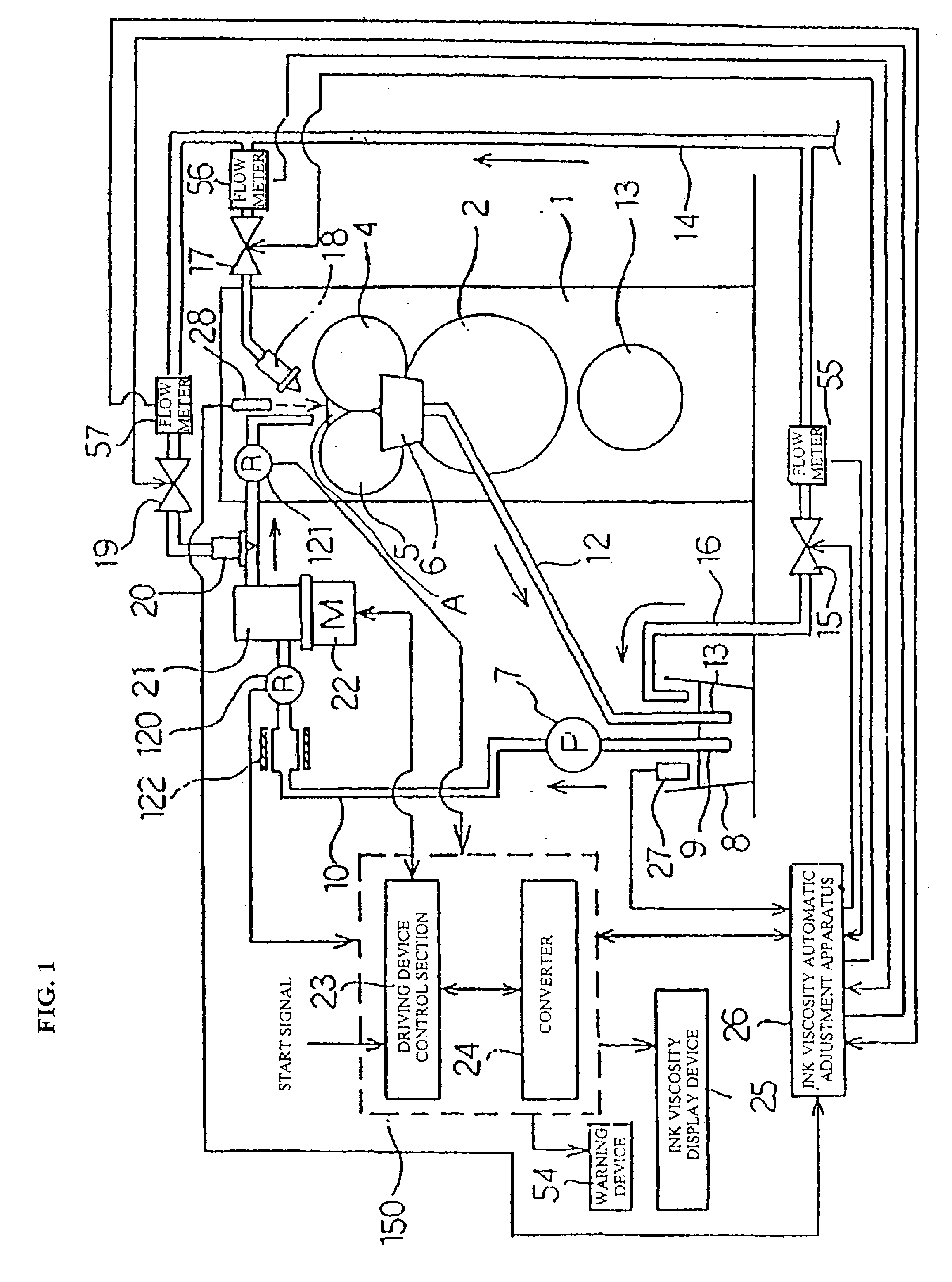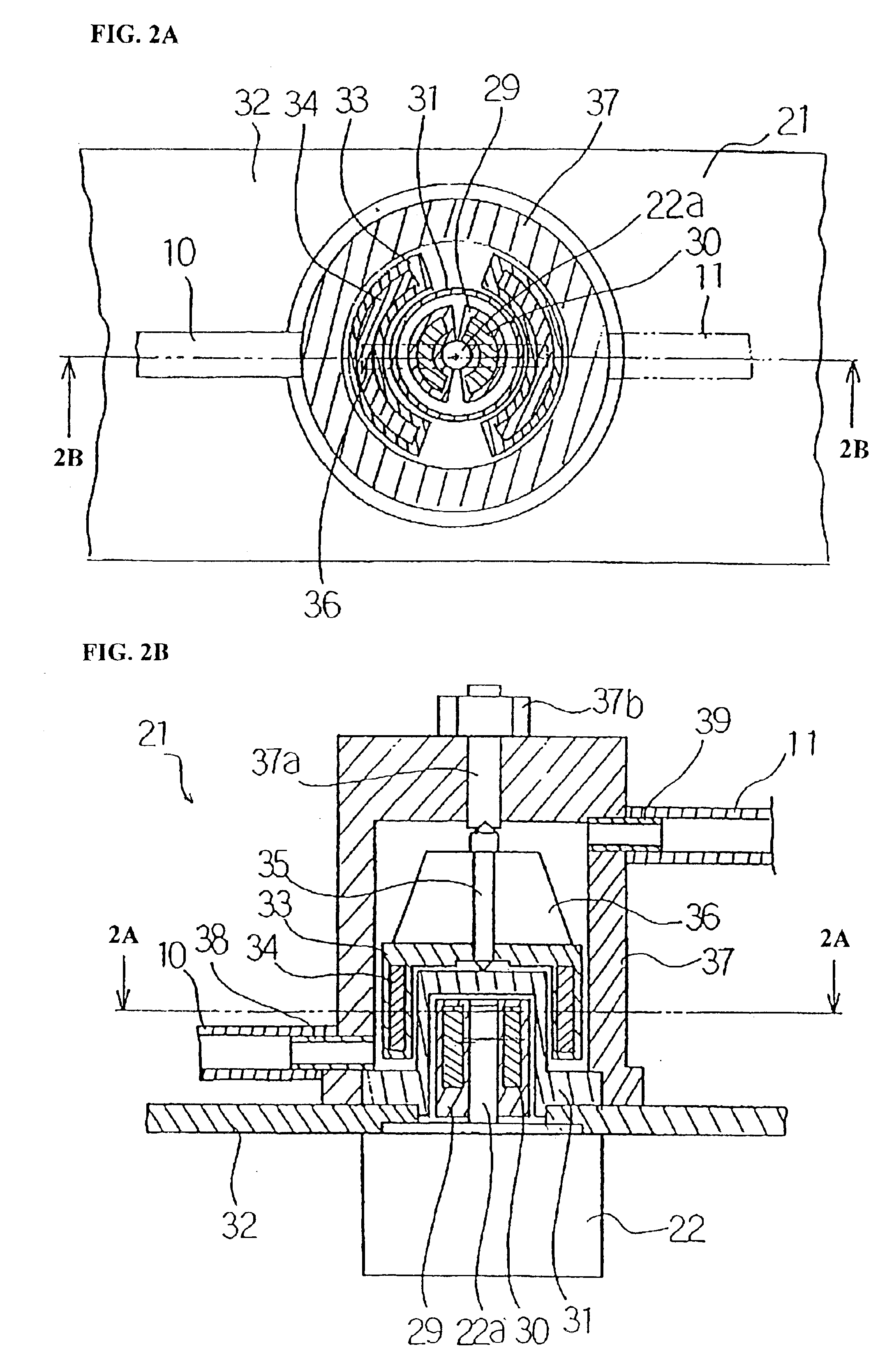Ink viscosity measuring device, ink viscosity adjusting method and a device therefor, and a printing apparatus
a measuring device and ink viscosity technology, applied in the direction of measurement devices, printing, instruments, etc., can solve the problems of ink loss, unsatisfactory printing, ink viscosity rise, etc., to eliminate complicated work on the part, accurate viscosity measurement, simple and inexpensive
- Summary
- Abstract
- Description
- Claims
- Application Information
AI Technical Summary
Benefits of technology
Problems solved by technology
Method used
Image
Examples
Embodiment Construction
[0133]The ink viscosity measuring device and ink viscosity adjusting device of the present invention will be described in terms of preferred embodiments with reference to the attached figures. FIG. 1 illustrates the overall construction and concept of the present invention. In the printing unit 1, the printing cylinder 2 around which a desired printing plate is wrapped, the pressing roll 3, the ink roll 4, the wringing roll 5, the ink collecting area A formed between the two rolls 4 and 5, the ink supply passage 10, the ink recovery passage 12 (including the ink pans 6), the ink pump 7 and the ink tank 8 are the same as in a conventional construction. Accordingly, a detailed description of these components is omitted. An ink viscosity measuring instrument 21 is installed in the ink supply passage 10 so as to be between the ink pump 7 and the ink collecting area A that is formed between the ink roll 4 and the wringing roll 5.
[0134]FIG. 2 illustrates the ink viscosity measuring instru...
PUM
| Property | Measurement | Unit |
|---|---|---|
| viscosity | aaaaa | aaaaa |
| magnetic field | aaaaa | aaaaa |
| magnetic fields | aaaaa | aaaaa |
Abstract
Description
Claims
Application Information
 Login to View More
Login to View More - R&D
- Intellectual Property
- Life Sciences
- Materials
- Tech Scout
- Unparalleled Data Quality
- Higher Quality Content
- 60% Fewer Hallucinations
Browse by: Latest US Patents, China's latest patents, Technical Efficacy Thesaurus, Application Domain, Technology Topic, Popular Technical Reports.
© 2025 PatSnap. All rights reserved.Legal|Privacy policy|Modern Slavery Act Transparency Statement|Sitemap|About US| Contact US: help@patsnap.com



